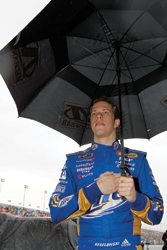It’s no longer enough to slap Twitter handles and Facebook URLs on the TV screen and call it socially savvy television. Social media users can now dictate the outcome of live TV shows, create their content and, most notably, affect their ratings.
But like any communication channel, it works best when the brand shows up for the party and participates in a two-sided conversation. People like to use social media to talk about what they are watching on TV, so the conversation is going to happen with or without brand participation.
Throughout the succinct, two-year history of social television, successes and failures have taught practitioners four valuable lessons:
■ 1. Control the conversation
The Super Bowl, the nation’s most-social sporting event of the year, had zero in-game broadcast social media integration. With more than one billion people on Facebook and Twitter alone, this was a huge missed opportunity. Why did NBC and NFL miss the boat?
Likely, the common internal social media struggles got in the way. Incorporating social media into the epic annual broadcast would have created adversity internally. It’s not the way they’ve always done it and, therefore, it’s uncomfortable. The network and sports league lost an opportunity to innovate the viewing experience. Rather than getting into the driver’s seat and controlling a record-breaking 13.7 million Super Bowl-related tweets that were deployed throughout the game, they let the conversation happen without them.
However, many advertisers took advantage of integrating social media within their pricey ads. H&M, for example, made a full-court press with their David Beckham Bodywear spot, simultaneously running a Twitter and Facebook campaign — which included purchasing the keyword “Madonna” on Twitter. This captured the attention of all those discussing Madonna’s halftime performance that trended organically throughout much of the game. The integrated approach garnered more than 108,000 social media mentions of the spot within 45 minutes of the ad airing and more than 2 million YouTube views thus far.
■ 2. Monitor and share real-time content with viewers
 |
Driver Brad Keselowski, shown here before the rain delay, saw his Twitter following balloon during the Daytona 500.
Photo by: GETTY IMAGES
|
TV networks and shows can put their finger on the pulse of viewer engagement before, during and after a program airs. A recent example of this was at the Daytona 500. For the first time, television partners Fox Sports and Speed included social media within the broadcast strategy. They collected and reported exclusive content from the track throughout the weekend and benefited from listening software that monitors and measures real-time social media conversations. Fox incorporated into its broadcast the most-talked-about drivers on Twitter, a designated Daytona hashtag, live tweets and talent/driver Twitter handles.
Heavy rain caused the race to be postponed to Monday night, a first for the Daytona 500. Three hours into Monday’s event, driver Juan Pablo Montoya crashed into the back of a jet dryer truck loaded with fuel, causing a fiery two-hour red-flag delay. What may have appeared to be a broadcaster’s nightmare turned into a social media opportunity for Fox Sports to keep viewers engaged throughout the delays. Minutes after the red flag, driver Brad Keselowski tweeted his view of the fire from inside his car on the track, and Fox Sports featured the tweet in-broadcast. By the end of the race, @keselowski saw more than 140,000 new followers on Twitter. Fox’s rain-delay coverage on Sunday was the highest-rated, most-watched event of the weekend, averaging 7.7 million viewers. The Monday race attracted 13.7 million viewers.
Companies like Mass Relevance, Simply Measured and Trendrr have developed tools that allow networks, shows and advertisers to measure the impact their TV presence has on their audience. This type of instant feedback based on organic data has never been attainable prior to now.
■ 3. Keep it organic
The golden rule of social media is to deliver value when, where and how the audience wants to receive it. With social TV, the audience is providing value right back. Naturally, viewers are talking about their favorite (or least favorite) TV shows and sporting events. So, let them talk back when, where and how they want. It not only provides a temperature on opinions and sentiment, but it also extends content into a perpetual conversation, with social media keeping the buzz alive even after the show is over.
Fox Sports takes a progressive approach to social media with their on-air personalities by integrating on-air mentions of the personalities’ Twitter handles and tweets within a broadcast. By doing so, Fox Sports talent is able to build relationships with fans on- and off-air, which can improve fan loyalty. (Full disclosure: Fox Sports requires its on-air talent to receive social media training from Digital Royalty University, a division of my company.)
■ 4. Incorporate a call to action
As lessons are being identified, it’s important to note that experimenting leads to best practices. The entertainment offering is only limited by the imagination of the producers. Recently, Dwayne Johnson turned the trending tables on national TV and dictated two worldwide trending topics. During a live WWE broadcast, he said that certain phrases would trend instantly. Within minutes, they did. More than 500 million users are on Twitter, and the trending topic list garners more than 150 million impressions each day. It’s safe to say this social call to action, which originated on TV, generated new viewership. The timing and 127 percent spike in ratings proves this.
Return on influence can be determined by hashtag counts, trending topics, an increase in followers and engagement levels. With more conversation around the show, more eyes are on the show’s other tweets — which may include moneymaking advertisement-laden links, promotions or other show initiatives. Heightened awareness means a greater reach and, in the end, a more-profitable show.
Amy Jo Martin (amy@thedigitalroyalty.com), founder of Digital Royalty, develops social media strategies for sports teams, leagues, athletes and corporate brands. Follow her on Twitter @AmyJoMartin.





